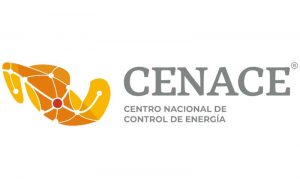
Last April 29, 2020, the National Energy Control Center (“CENACE”), issued the Agreement to Guarantee the Efficiency, Quality, Reliability, Continuity and Security of the National Electric System (“Agreement”), due to the recognition of the SARS-COv2 virus disease epidemic (COVID-19).
As a result of the foregoing, the Plenary of the Federal Economic Competition Commission (“COFECE”), in a meeting held on May 6, 2020, issued opinion number OPN-006-2020, whose analysis and recommendations were made public through this letter.
As a follow up to the above, the Agreement by which the Reliability, Safety, Continuity and Quality Policy for the National Electric System is issued, issued by the Ministry of Energy, was published in the Official Gazette of the Federation on May 15, 2020 (“SENER Agreement”). From the recitals, the following is highlighted:
“That the present policy contemplates in a more orderly manner the penetration of Power Plants with Intermittent Clean Energy, photovoltaic and wind, foreseeing that the Alert and Emergency Operating States are reduced to a minimum according to international experiences, reducing as much as possible the forced outages associated to generation particularly dangerous in the sunrise and sunset ramps, as well as in the critical hours of the National Electric System and that expose to financial damages to the National Electric System, as well as to the final Users. Such strengthening will be carried out through the optimization of the elements that make up the National Electric System as a whole, and
The Third Transitory Article of the SENER Agreement, on the other hand, establishes:
“Third. Pursuant to this policy of Reliability, Safety, Continuity and Quality in the National Electric System, the Energy Regulatory Commission and the National Energy Control Center, within the scope of their powers and competencies, shall carry out the corresponding adjustments to the Market Rules and the “General Administrative Provisions that contain the Criteria of efficiency, Quality, Continuity, safety and sustainability in the National Electric System; Network Code, as provided in article 12, section XXXVII of the Electricity Industry Law” and those that may be necessary in matters of efficiency, Quality, Reliability, safety and sustainability in the National Electric System.
As long as the adjustments indicated in the previous paragraph are not made for the application of the Reliability, Safety, Continuity and Quality Policy in the National Electric System, those in force before the entry into force of this Agreement will be applicable, as long as they do not oppose the provisions of this Policy, being in charge of the Ministry of Energy to resolve any doubt regarding the applicable provision that may arise in case of conflict.”
Chapter V of the General Provisions of the SENER Agreement, in section 2. Scope, point 2.2., establishes the following:
“2.2 The Electricity Market Bases and General Administrative Provisions (DACG) and other regulations issued by CRE; the Market Operating Provisions governing the MEM issued by CENACE; as well as the regulation for the incorporation of Distributed Generation to the SEN and the other operations carried out by the Transporters or Distributors; which are related to activities derived from this Policy, shall comply with the principles, guidelines and provisions of this instrument.”
Chapter VI of Dimensions of the Reliability, Safety, Continuity and Quality Policy in the National Electric System, in item 6 of Sufficiency, point 6.2 Primary Regulation, point 6.2.3, indicates:
“6.2.3. All Power Plant units connected and delivering active power to the SEN shall operate participating in the Primary Regulation (in free mode). The Power Plant units, participating in the Primary Regulation, shall adjust their production following the frequency changes of the System and in the actuation times established by CENACE. For those Wind, Photovoltaic and Efficient Cogeneration Power Plants with a date of entry into operation, which have an Interconnection contract without being in operation and with a Facilities study delivered prior to the publication of the Network Code of April 08, 2016 in the DOF, it will apply to them after 18 months of the publication of this Policy.”
In the same Chapter VI, item 7 of Dispatch Security, point 7.1.2, the SENER Agreement states that CENACE will determine the necessary actions to maintain the Dispatch Security in compliance with the objectives of Security, Quality and Continuity of the Policy and the provisions issued by CRE on the matter, indicating some of them.
On the other hand, point 8 of the SENER Agreement, regarding New Ancillary Services, establishes new services linked to the operation of the SEN, such as the Coverage of the Variability of Power Plants with Intermittent Clean Energy, photovoltaic and wind power and Special Load Centers. It also indicates that the CRE will issue the regulation and tariffs applicable to Ancillary Services.
Point 10 of the SENER Agreement, regarding the Incorporation of Intermittent Clean Energies, states:
“10.1 The integration of Installed Capacity of Power Plants with Intermittent Clean Energy in the SEN will be maintained for all Power Plants that have reached the Interconnection Contract one day prior to the publication of this Policy in the DOF. If for any Power Plant with Intermittent Clean Energy, wind or photovoltaic, the Interconnection Contract or Generation Permit is cancelled, CENACE will evaluate the requests so that, based on the entry position and progress in its platform called “SIASIC”, the Interconnection point of the Request and the regional hosting capacity of Intermittent Clean Generation considering the Reliability of the System, the feasibility of accepting the Study request and continuing the Study process will be determined.
10.8 Regarding the Power Balance Market, Power Plants with intermittent Clean Energy sources do not provide a firm amount of Power, therefore, they do not contribute to the Reliability of the Electric System”.
In Chapter VII, Final Provisions of the SENER Agreement, point 13.1, establishes the following:
“13. The interpretation made by CENACE and CRE, within the scope of their powers and competencies, shall be made in accordance with this Reliability, Security, Continuity and Quality Policy in the National Electric System, therefore, in the event of conflict between the Market Rules and this Policy, it shall be interpreted in accordance with the latter.”





